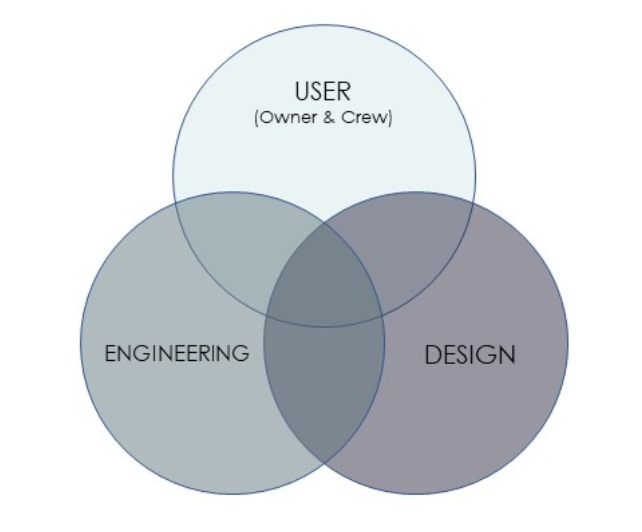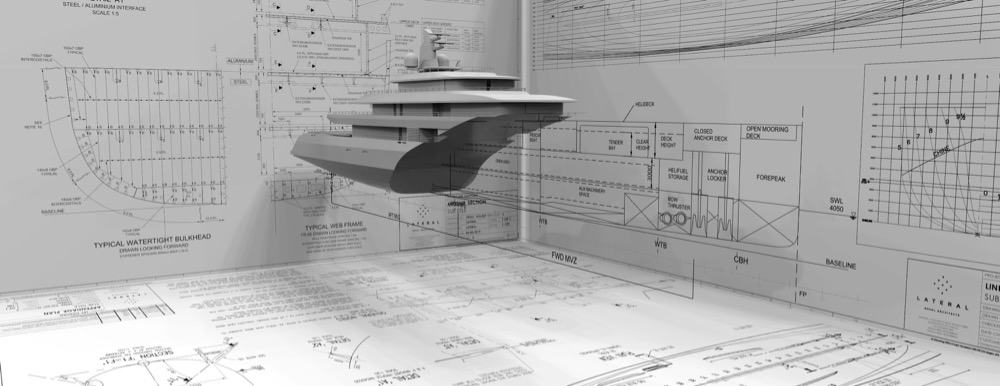By SuperyachtNews
24 Jun 2019
Learning Lessons in Engineering and Design
James Roy considers the interaction between design and engineering within the system of superyacht projects…
James Roy, Managing Director of the naval architecture and engineering firm Lateral, considers the interaction between design and engineering within the system of superyacht projects.
I began my career in naval architecture 23 years ago designing commercial vessels. In that environment design and engineering decisions on form, features and layout can invariably be made based on a balance of technical and commercial factors measured against construction cost, overall operability, revenue earning capability etc. In general, all these factors can be quantitative and finite.
Some years later, still relatively fresh faced I entered the world of superyachts. My first project was an eye opener to say the least, and I recall the first meeting with the projects design team to discuss some layout features. I observed discussions unfolding about a certain layout feature and whether or not the client would like this solution. In my youthful naivety I asked the simple question, “Why don’t we call him and ask?”, which was met with a round of laughter. Lesson 1 learnt, design focuses on the user, and often his / her needs are not readily accessible to the project team, but must be very carefully anticipated, often from relatively limited information.
Some meetings later, from my engineering perspective I suggested that in the main saloon pillars would be required to support the deck above, because this would produce the most efficient structure, smaller overhead package, and therefore least structural weight and cost. Of course, this was met by immediate distain from my design counterpart, which at the time I could not understand. The design team stood their ground, and my engineering skills were put to work to remove the pillars. Lesson 2 learnt, design should challenge engineering, and in that relationship what can feel like a conflict is in fact a very healthy mechanism to deliver a result which is greater than either party could achieve on their own.
Fast forward a few years and a few more projects, I found myself aboard a 60m on which we had been asked to undertake consultancy relating to machinery exhaust issues. My one day visit to the yacht turned into an overnight repositioning, which gave the unexpected opportunity to spend some time with the crew. Whilst anchoring I observed the crew struggling with the mooring system and, as the visiting naval architect, I became a focal point for the venting of frustration, “why would anyone design a system in that way, it just doesn’t work well”. This got me thinking about how little I had observed feedback from the users finding its way into design and engineering meetings on new projects. Lesson 3 learnt, the crew are also the end users yet in our often design centric industry their needs are frequently under-emphasised.
These very simple (in engineering complexity terms) examples and the lessons I took from them have remained with me over the years, and I find myself repeatedly reflecting on them. We decided at Lateral to build these into a simple model that acts as a guide to ensure we are actively aware of the system within which our projects are set.
Let’s begin with a simple Venn diagram, constructed to represent three different perspectives; those of users, those of design, and those of engineering. This is not to say that these are the only roles involved in creation of a superyacht, but every role in the industry ecosystem, be it a shipyard, broker, lawyer, crew or consultant can be placed somewhere in the Venn diagram depending on where their expertise and bias of their business places them. Now imagine yourself living within the plane of the diagram; others in the system may be blocking your view or limiting your access to other members of the project. There will be an epicentre of influence.

What this demonstrates is that it can be a complex system, and often we cannot see the perspectives of others, not because we lack the motivation to do so, but because we are within a system that is unique to the project, and in many cases there will be a significant bias in the location of the epicentre.
Take this model and apply it to your own project; place yourself and other partners in your project within these circles and consider the weight of their influence, ask yourself where the epicentre of influence sits. Does a perfect project sit at the absolute centre of the diagram? Can we even assume that the epicentre is static? Also ask yourself, from wherever you sit in the diagram, whether you have adequate visibility, interaction with or any influence over the other areas, do you even need this?
We do not believe that there are singular answers to these questions, every project will be different, but there should be an active awareness that the position of the project’s epicentre matters and is a driver to the project’s success.
Let’s return to the lessons learnt, and our conclusions; design focuses on the user, which includes those who operate the yacht. We believe that design should challenge engineering, and in turn engineering must respond to enable more creative design in the simplest way possible. To achieve this engineering must be as much a creative discipline as design. Engineering must deliver fresh ideas underpinned by a spectrum of technology that enables design to explore new avenues, perhaps even ask new questions…
Profile links
Click here to become part of The Superyacht Group community, and join us in our mission to make this industry accessible to all, and prosperous for the long-term. We are offering access to the superyacht industry’s most comprehensive and longstanding archive of business-critical information, as well as a comprehensive, real-time superyacht fleet database, for just £10 per month, because we are One Industry with One Mission. Sign up here.




